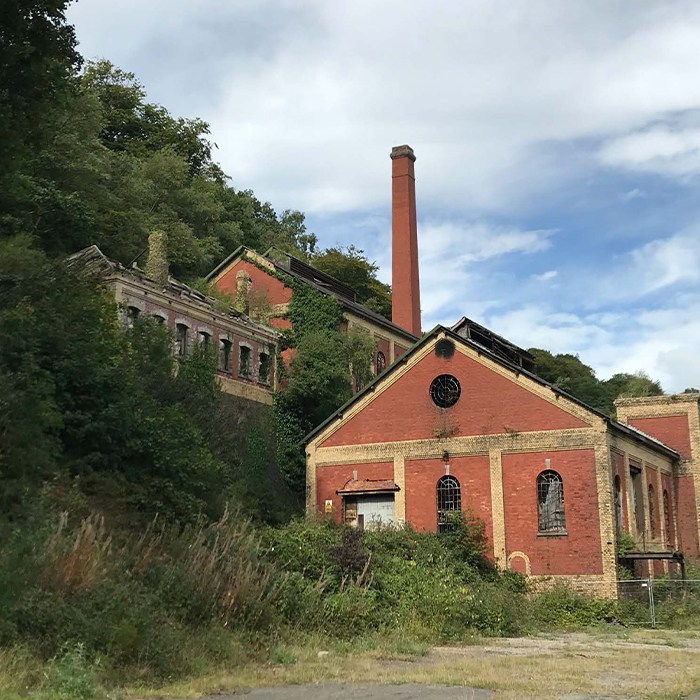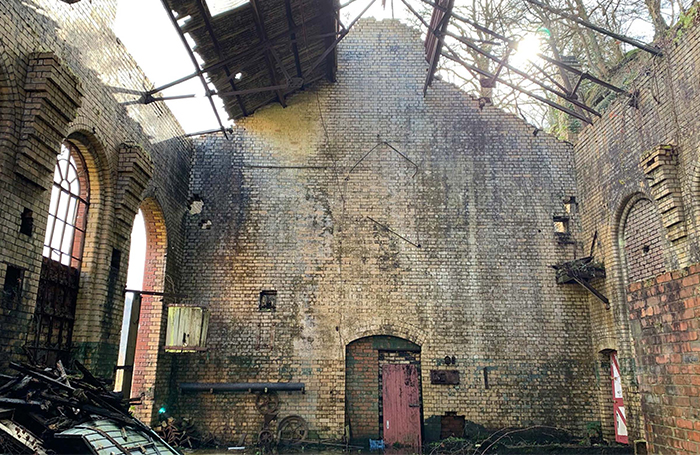Owain Williams, founder of Mayfair-based OWA and a tutor at London Metropolitan University, will be running the student engagement event and workshops taking place next week as part of Wales Week London 2024. This annual showcase held at 66 Portland Place in London highlights the work of Welsh architects and artists with links to the capital.
The week-long event, culminating in an evening exhibition, celebrates the role of Welsh architects and will feature professionals who now work in London.
How does Welsh identity influence their work, if at all? And what does it mean to the design work they carry out in London?
One answer might lie with a project Owain works on, both as an architect in practice and also with London-based students, who get to bring back a piece of Wales with them every time they return from a field trip.

Why choose an architecture project in Wales?
Owain is from Pontypridd in south Wales and has been working on the nearby, 100-year-old Navigation Colliery in Crumlin, in the neighbouring Ebbw Vale. The colliery is an architectural showcase of the local coalfields that were abandoned 50 years ago and comprises more than a dozen heritage-listed buildings that have steadily declined in the deindustrialised landscape.
When he was looking at sites that would make for interesting designs briefs for his students, Owain thought rather than present them with the usual London infill site to tackle, why not take them to Crumlin and present them with a whole world of unfamiliar challenges? After all, he was commissioned by the South Wales Buildings Preservation Trust to work on it in-practice, so why not share the project with his students?
“There is a full campus of buildings, with everything from winding houses and bath houses to repair workshops,” Owain says about the challenges the site poses. “It is a quite well-preserved architectural set piece that has become a sort of visual metaphor for the decline of industry in the area.”
There are architectural history lessons there too. Owain explains how German engineers were brought over to Wales to build the winding houses, which means the colliery landmarks we associate with Welsh mining communities are actually a German typology. When the same engineers and local builders needed to build two-storey stone chapels of a similar size in the locale, the same typology was kept and gave rise to the familiar Welsh chapel.
As for the site, Owain and his team encountered numerous challenges: buildings were built on contaminated ground, which were massively over-serviced with abandoned rail tracks. The site also features a culverted river running through the middle of it.
When it came to the students, Owain posed this question: how do you adapt and bring back into use these historic buildings with all of their myriad challenges? It was a tough ask and a world away from the usual London gap sites they are used to.

What are the characteristics of the architectural project in Wales?
Many of the students had rarely ventured out of London, and several are international. Owain says even the very slow journey to the site via public transport was an eye opener for them, as they were able to take in the rural surroundings and form an understanding of landscapes and spatial relationships in a different way to what they experienced previously.
While in the Ebbw Vale, they were also able to soak up the all-pervading sense of community spirit and an approach that values of culture above commercial life, which, to Owain typifies his own values. And again, he mentions the word ‘slowness’ – a slower pace of life and time to really appreciate the surroundings.
Separately, Owain has been working on a masterplan to bring the historic Navigation Colliery back to life for the local authority. The regeneration is being supported by the South Wales Building Preservation Trust.
The early focus will be on the thoughtful repair on one small building, the general manager’s office, which he hopes will be a showcase for the wider site and encourage follow-up projects.
The building is the most highly-detailed and ornamented on site, and in its day would have suitably impressed the colliers as they filed through to collect their wages.
“It’s almost like a found piece of pottery that we are trying to put back together in as thoughtful a way as possible to do justice to the Navigation story,” says Williams.
Not only that, but he and his students bring back a piece of his local area every time he comes back to London, and vice versa. This means despite his long-held emotional attachments to the area, he invites a more objective view and encourages a different way of looking at things from his students coming from London.
A perfect collaboration between the two countries.
This is the third year running that RIBA has hosted an architectural event for Wales Week London, with a host of events taking place on 29 February 2024, including the RSAW Wales Week London – evening exhibition featuring the work of Welsh architects and artists working in London or with links to the capital.
Book your tickets to the evening exhibition and find out more about the RSAW Wales Week London.
Thanks to Owain Williams, founding principal, OWA.
Text by Neal Morris and the RIBA Practice team. Send us your feedback and ideas.
RIBA Core Curriculum topic: Business, clients and services.
As part of the flexible RIBA CPD programme, professional features count as microlearning. See further information on the updated RIBA CPD core curriculum and on fulfilling your CPD requirements as a RIBA Chartered Member.









